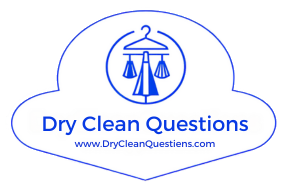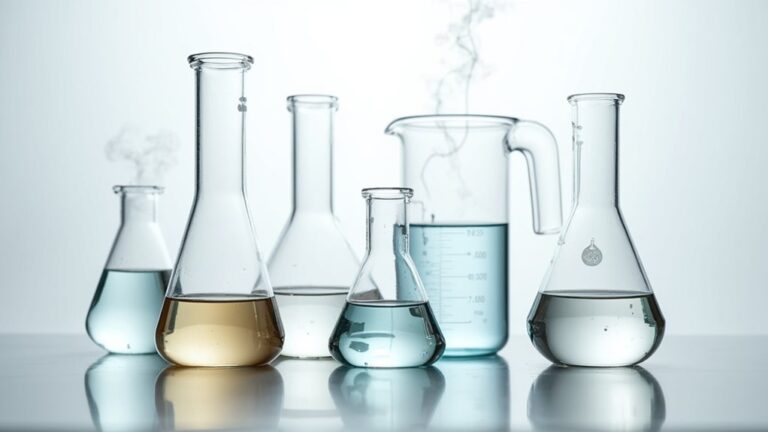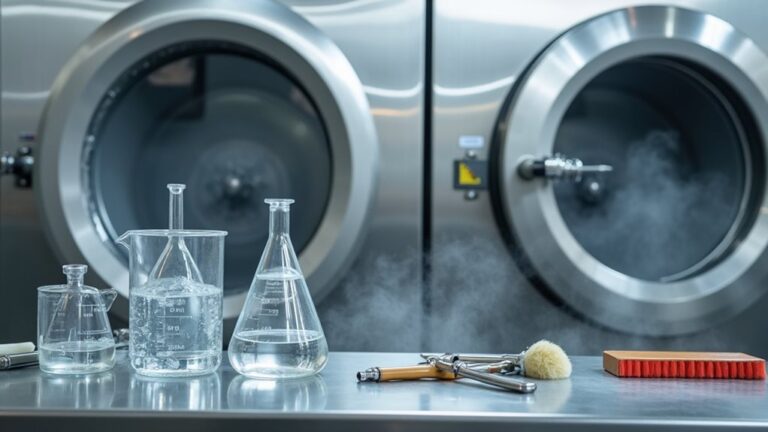Yes, traditional dry cleaning can be toxic to you since most facilities still use perchloroethylene (PERC), a chemical the government classifies as a human carcinogen linked to bladder cancer and non-Hodgkin lymphoma. When you bring those freshly cleaned clothes home, they’re actually carrying PERC residue that slowly releases vapors for days, potentially causing headaches, dizziness, and long-term neurological damage—something I learned after years of hanging dry-cleaned suits in my poorly ventilated closet. Understanding these risks helps you make safer choices for your family’s health.
What Chemicals Are Used in Dry Cleaning
When I first started paying attention to what actually happens during dry cleaning, I was honestly shocked to discover that the industry relies heavily on a chemical called perchloroethylene, or PERC as it’s commonly known, which has been classified as a human carcinogen by the U.S. National Toxicology Program.
I was honestly shocked to discover that dry cleaning relies on PERC, a chemical classified as a human carcinogen.
You’d think this would make headlines everywhere, but somehow it doesn’t 🤷♀️.
The dry cleaning chemicals environment gets even murkier when you consider that alternatives to PERC, like n-propyl bromide, bring their own health risks including neurotoxic effects and reproductive damage.
Even newer options like siloxane need more research to understand their environmental impact.
Exposure to PERC can also cause immediate symptoms like dizziness, headaches, and respiratory issues, making it a concern for both dry cleaning workers and customers alike.
It’s honestly overwhelming how many toxic substances we encounter without realizing it.
Health Risks Associated With PERChloroethylene (PERC)
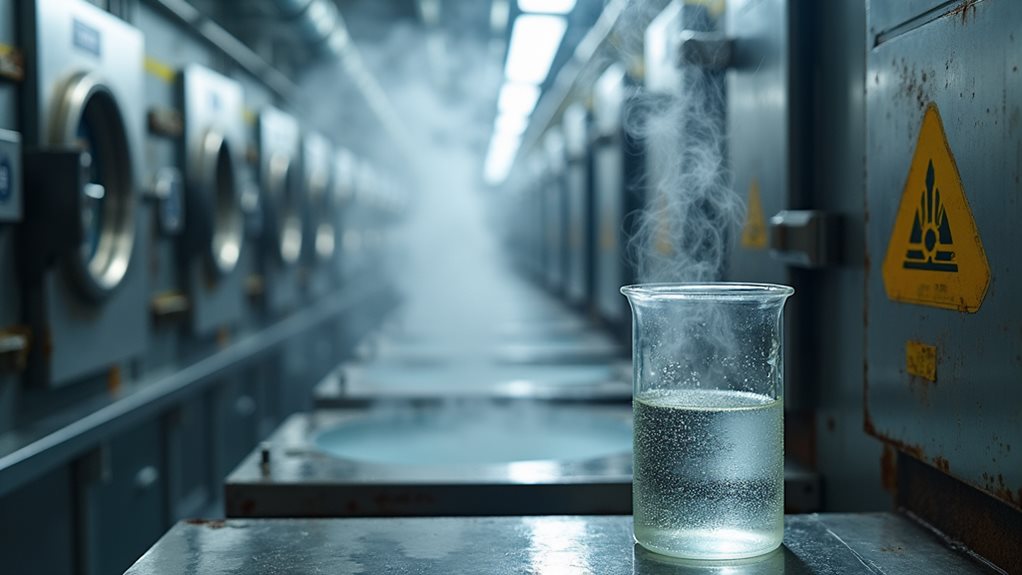
When you drop off your favorite blazer at the dry cleaner, you’re probably not thinking about cancer risks, but PERC exposure has been linked to serious health concerns including non-Hodgkin lymphoma and bladder cancer.
The workers behind that counter face even greater dangers, spending their days in environments where PERC vapors can cause everything from headaches to long-term organ damage.
It’s sobering to realize that what seems like a simple clothing care routine actually involves a chemical so concerning that states like California are rushing to ban it entirely. 😰
Fortunately, many dry cleaning facilities are now adopting safer alternatives like wet cleaning, liquid CO2, and hydrocarbon solvents to reduce these health risks.
Cancer Risk Links
Although I’d love to tell you that your favorite blazer emerges from dry cleaning completely harmless, the reality is far more concerning when we examine PERC’s cancer-causing potential.
The U.S. National Toxicology Program has classified this toxic chemical as a human carcinogen, and frankly, that classification should make us all pause before our next dry cleaning trip.
The cancer risk data paints a troubling picture for environmental health:
- Bladder cancer rates increase considerably with long-term PERC exposure
- Non-Hodgkin lymphoma connections have been scientifically established through multiple studies
- Dry cleaning workers face heightened cancer mortality due to their prolonged workplace exposure
These aren’t just statistics on paper—they represent real people whose health has been compromised by routine exposure to these dangerous solvents in seemingly innocent workplace environments.
Beyond cancer risks, PERC exposure can also cause immediate health effects such as dizziness, headaches, and potential damage to the nervous system and liver.
Worker Exposure Dangers
Behind every crisp shirt and perfectly pressed suit lies a harsh reality that most of us never consider—the dry cleaning workers who handle these garments breathe in dangerous PERC vapors for eight hours a day, five days a week, creating a workplace environment that’s fundamentally a slow-motion health disaster.
Worker exposure to perchloroethylene creates devastating health effects that range from immediate discomfort to life-threatening conditions. Acute exposure causes dizziness, headaches, and breathing problems that workers endure daily, while the dry cleaning industry’s cancer mortality rates tell an even grimmer story.
These dedicated employees face increased risks of bladder cancer and non-Hodgkin lymphoma, sacrificing their long-term health so we can look professionally polished. 😔
Prolonged exposure to PERC can also lead to skin irritation and respiratory issues, making the workplace even more hazardous for those who rely on eco-friendly solvents as safer alternatives.
How Toxic Chemicals Remain on Your Clothing

After you slip into that crisp, freshly dry-cleaned shirt, you’re actually wrapping yourself in a chemical cocktail that includes perchloroethylene—a known carcinogen that stubbornly clings to fabric fibers long after the cleaning process ends.
That crisp dress shirt isn’t just clean—it’s saturated with perchloroethylene, a persistent carcinogen that transforms your wardrobe into a toxic vapor source.
Here’s what happens when residual PERC settles into your wardrobe:
- Fabric absorption increases with each cleaning, meaning your favorite wool suit becomes more contaminated over time.
- PERC concentration decreases slowly, with Georgetown research showing only 50% reduction after a full week.
- Poor ventilation amplifies exposure, turning your closet into a miniature chemical storage facility.
The health risks from this chemical residue aren’t just theoretical—you’re literally breathing in toxins that can trigger respiratory issues and headaches.
Your dry-cleaned clothes become wearable hazards, slowly releasing vapors that contaminate your personal space.
Beyond immediate symptoms, prolonged exposure to these chemicals has been linked to more serious health consequences including neurological problems, liver damage, and reproductive issues.
Environmental Impact of Dry Cleaning Solvents
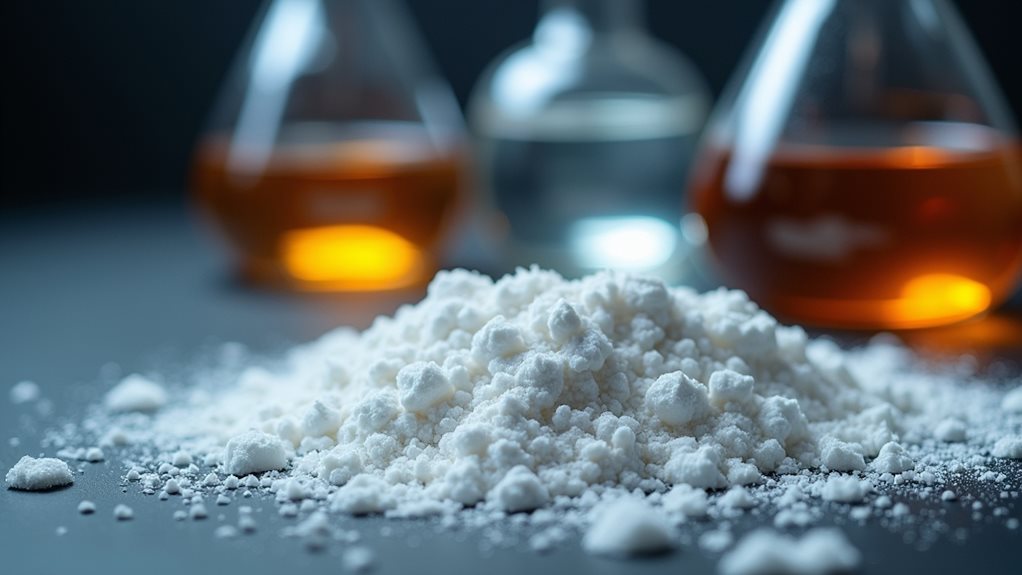
When your freshly cleaned garments leave the dry cleaner, they’re not merely carrying chemical residue into your home—they’re part of a much larger environmental crisis that’s quietly unfolding in communities across the country.
PERC escapes through ventilation systems, lingering in outdoor air for months while degrading air quality and accelerating ozone depletion. These dry cleaning solvents don’t just vanish; they seep into ground contamination zones, poisoning soil and disrupting local ecosystems you probably walk through daily.
Water systems become contaminated too, threatening marine life and potentially your drinking water.
Even PERC alternatives like n-propyl bromide persist in the environment, creating long-term environmental risks that’ll outlast your favorite suit by decades. 😅
The energy-intensive process of traditional dry cleaning also contributes significantly to carbon emissions, adding another layer to its environmental burden.
Occupational Hazards for Dry Cleaning Workers

While communities grapple with contaminated soil and poisoned water systems, the workers inside dry cleaning facilities face an even more immediate and concentrated threat to their health.
You might think working with clothes seems harmless, but dry cleaning workers breathe carcinogens like PERC daily, often in spaces with terrible ventilation that’d make a submarine feel spacious.
The health risks these workers face include:
- Immediate effects – dizziness, headaches, and breathing problems from acute solvent exposure
- Cancer risks – higher rates of bladder cancer and non-Hodgkin lymphoma from long-term PERC exposure
- Organ damage – chronic neurological and liver problems that develop over years
Without federal regulations protecting them, these workers remain vulnerable to solvents that shouldn’t exist in any workplace. Proper ventilation in dry cleaning facilities is essential for reducing worker exposure to these dangerous chemicals, yet many facilities still operate with inadequate air circulation systems.
Alternative Chemicals and Their Safety Concerns
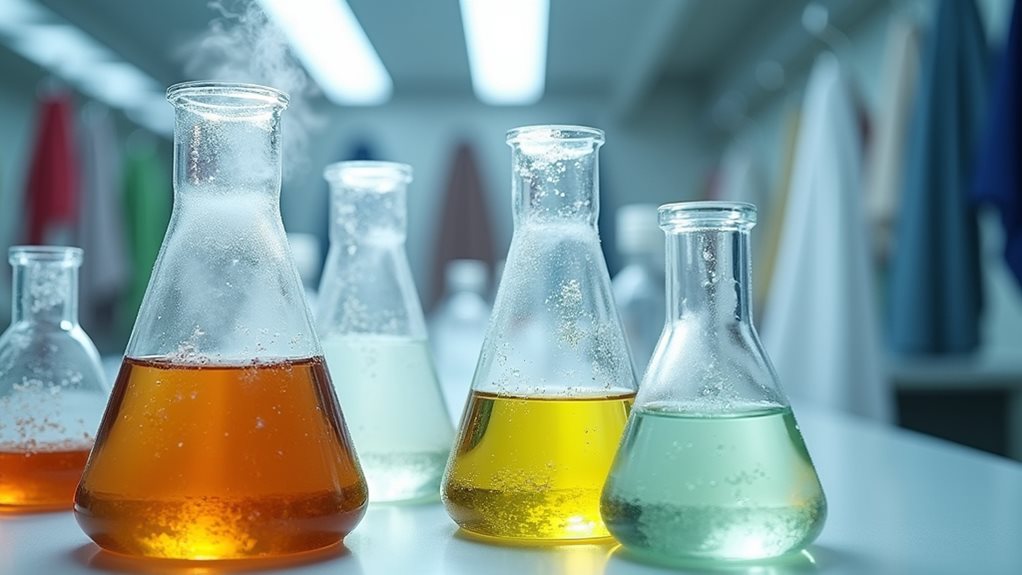
You might think switching from perc to newer alternatives automatically means safer dry cleaning, but honestly, it’s like trading one set of concerns for another—and sometimes the devil you don’t know can be worse than the one you do.
N-propyl bromide, which many cleaners adopted as a “safer” option, turned out to cause dizziness, reproductive damage, and nervous system problems, earning it the unfortunate label of “regrettable substitution” 😬.
Meanwhile, other alternatives like siloxane D5 and high-flashpoint hydrocarbons sound promising on paper, but they’re fundamentally chemical experiments with limited long-term health data, leaving you to wonder if we’re just kicking the safety can down the road.
Fortunately, wet cleaning and liquid CO2 methods offer genuinely safer alternatives that eliminate toxic chemical exposure for both workers and customers.
N-Propyl Bromide Risks
Although perchloroethylene has dominated headlines for its health risks, n-propyl bromide (n-PB) has quietly emerged as what experts call a “regrettable substitution” – fundamentally trading one problematic chemical for another that’s arguably just as concerning.
When you’re choosing dry cleaning services, you might encounter n-PB without realizing it, and frankly, the health implications are pretty alarming. The International Agency for Research on Cancer classifies this toxic substance as possibly carcinogenic, meaning cancer risks lurk beneath that fresh-pressed shirt.
Here’s what n-PB exposure can cause:
- Immediate symptoms like dizziness, nausea, and headaches
- Nervous system damage from prolonged exposure
- Environmental contamination affecting air, water, and marine ecosystems
Unfortunately, n-PB creates similar environmental pollution patterns as its predecessor, proving that sometimes “safer” alternatives aren’t actually safer at all. Consumers can significantly reduce exposure risks by choosing dry cleaners that use modern alternatives like hydrocarbon solvents, liquid CO2, or wet cleaning methods.
Siloxane D5 Hazards
When I first heard about GreenEarth® dry cleaning‘s siloxane D5 system, I’ll admit I felt that familiar flutter of hope that we’d finally found the holy grail of garment care – something that wouldn’t make me worry about my family’s health every time I picked up my husband’s work shirts.
However, my research quickly revealed that D5’s safety story isn’t quite complete yet. While this siloxane D5 alternative boasts a smaller environmental impact than PERC, there’s concerning gaps in toxicity data that make me pause.
The lack of occupational exposure limits means workers don’t have clear safety guidelines, and studies suggest ecosystem accumulation could pose long-term problems. Without thorough health implications research, we’re fundamentally conducting an experiment.
Fortunately, many dry cleaners now offer eco-friendly cleaning methods like wet cleaning and CO2 cleaning that provide safer alternatives to both traditional PERC and newer chemical solvents.
Hydrocarbon Solvent Concerns
While researching alternatives to PERC, I discovered that hydrocarbon solvents like DF-2000™ and EcoSolv® seemed promising at first glance, but they carry their own set of troubling unknowns that left me feeling like I was simply trading one concern for another.
Here’s what concerned me most about these petroleum-based alternatives:
- Limited research exists on their long-term health and environmental impacts, despite widespread use by cleaners who previously relied on more toxic options.
- High flashpoints of 140°F create potential fire hazards and exposure to harmful fumes during the cleaning process.
- Volatile nature means these solvents can easily become airborne, creating potential risks for workers and customers alike.
Unlike liquid silicone alternatives, these hydrocarbon solvents haven’t undergone the rigorous safety and health testing we’d expect, making me wonder if we’re simply kicking the can down the road. 🤔
Safer Dry Cleaning Methods and Technologies

Innovation in the dry cleaning industry has quietly revolutionized how we can care for our delicate garments, and honestly, it’s about time we’d safer options that don’t make us worry about breathing in mystery chemicals every time we pick up our favorite blazer.
Finally, we can breathe easy knowing our clothes get the care they deserve without the chemical cocktail side effects.
You’ll find eco-friendly alternatives like liquid silicone and wet cleaning processes that use mild detergents with computer-controlled precision, guaranteeing your clothes come out spotless without the toxic baggage.
Liquid carbon dioxide cleaning stands out as one of the safest methods available, while biodegradable alternative solvents like propylene glycol ethers offer promising solutions.
These safer dry cleaning methods aren’t just better for your health—they’re protecting our planet too, which feels like a win-win situation we can actually feel good about.
How to Choose Non-Toxic Dry Cleaning Services

Now that you know these amazing alternatives exist, the real challenge becomes finding a dry cleaner in your neighborhood who actually uses them—and trust me, I learned this the hard way after spending months assuming my “green” dry cleaner was truly eco-friendly, only to discover they were still using PERC and just had really convincing marketing materials 🤦♀️.
Here’s your game plan for finding genuinely non-toxic green dry cleaning:
- Ask directly what chemicals used – Don’t accept vague answers about being “environmentally friendly”.
- Look for certifications proving they use eco-friendly cleaning methods like liquid CO2.
- Check online reviews specifically mentioning non-toxic practices.
The dry cleaners use marketing buzzwords freely, so you’ll need to dig deeper than surface-level claims to find authentic, safe alternatives.
